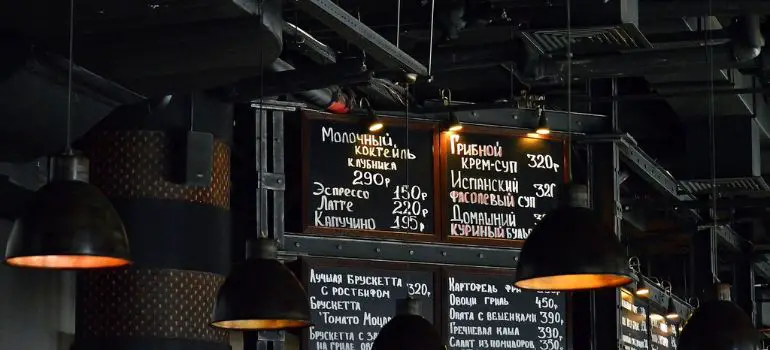Ceiling lights play a crucial role in illuminating our living spaces, but sometimes the existing wiring may not reach where you want to install a new fixture. In such cases, extending the ceiling light wire becomes necessary. This article will guide you through the process, ensuring safety and efficiency every step of the way.
Assessing the Situation
Before diving into the task, it’s essential to assess the existing wiring situation. Check the current wiring to understand its condition and capacity. Additionally, measure the distance from the existing ceiling light to the desired location for the new fixture. This measurement will help you determine the length of wire needed for the extension.
Safety Precautions
Working with electricity demands utmost caution. Begin by turning off the power supply to the circuit where you’ll be working. This step prevents any accidental shocks or short circuits. Additionally, make sure to use insulated tools and wear appropriate safety gear throughout the process.
Materials Needed
Gather all the necessary materials before starting the task. You’ll need wire of appropriate gauge, wire nuts for connecting wires, wire strippers for removing insulation, and electrical tape for securing connections.
Step-by-Step Guide
Step 1: Turn off power
Locate the circuit breaker corresponding to the area where you’ll be working and switch it off. Use a voltage tester to ensure the power is truly off before proceeding.
Step 2: Measure and cut wire
Measure the distance between the existing ceiling light and the new fixture location. Add a few extra inches for flexibility. Cut the wire to the measured length using wire cutters.
Step 3: Strip insulation
Using wire strippers, carefully strip about half an inch of insulation from the ends of the wires to expose the conductive metal.
Step 4: Connect wires
Twist the exposed ends of the existing and extension wires together based on their color-coding (usually black to black, white to white, and green or bare copper to green or bare copper). Secure the connections using wire nuts, ensuring they are tight and well-insulated.
Step 5: Secure connections
Wrap electrical tape around the wire nuts to provide an additional layer of insulation and stability. Make sure the connections are snug and free from any exposed wires.
Ensuring Compatibility

Before proceeding with extending the ceiling light wire, it’s crucial to ensure compatibility both with the existing wiring and the new fixture. Check the specifications of the wires to verify that they are of the same gauge and type. Additionally, confirm that the new fixture is compatible with the voltage and wattage requirements of the existing electrical system.
Addressing Challenges
During the installation process, you may encounter various challenges such as obstacles in the wiring path or difficulty accessing certain areas. Be prepared to troubleshoot these issues by considering alternative routes or methods. For example, if there are obstructions blocking the path of the wire, you may need to use conduit or flexible tubing to reroute the wiring.
Considering Future Needs
While extending the ceiling light wire, it’s wise to anticipate potential future changes or upgrades to your lighting setup. Leave extra length in the wiring to accommodate future adjustments, such as relocating the fixture or adding additional lights. By planning ahead, you can save yourself the hassle of rewiring in the future.
Maintaining Aesthetic Appeal
In addition to functionality, consider the aesthetic aspect of the installation. Conceal the wires using methods such as running them behind molding or within walls for a clean and polished look. Explore wire management solutions such as cable raceways or wire clips to keep the wiring organized and visually appealing.
Seeking Professional Help
While extending ceiling light wire is a DIY-friendly project, there are instances where professional assistance may be necessary. If you encounter complex wiring configurations or are unsure about the safety of the installation, don’t hesitate to seek the expertise of a licensed electrician. Safety should always be the top priority when working with electricity.
Budget-Friendly Alternatives
If you’re working within a tight budget, there are several cost-effective alternatives to consider for extending ceiling light wire. Purchase wiring materials in bulk to save on costs per foot, and opt for DIY approaches whenever possible to avoid labor charges. Additionally, explore online tutorials and resources for tips on maximizing efficiency and minimizing expenses.
Adhering to Local Regulations
Before embarking on any electrical project, familiarize yourself with local building codes and regulations governing electrical installations. Ensure that your work complies with safety standards and guidelines to avoid potential fines or safety hazards. If you’re unsure about the legality of your project, consult with a qualified electrician or building inspector for guidance.
Long-Term Maintenance
Once the ceiling light wire extension is complete, it’s essential to prioritize long-term maintenance to ensure the ongoing functionality and safety of the installation. Conduct periodic inspections to check for signs of wear or damage, such as frayed wires or loose connections. Address any issues promptly to prevent potential hazards and prolong the lifespan of the wiring.
Environmental Considerations
In an increasingly eco-conscious world, consider the environmental impact of your wiring materials and installation practices. Opt for eco-friendly wiring options whenever possible, such as recycled copper or PVC-free insulation. Minimize waste by properly disposing of any leftover materials and recycling old wiring components.
Celebrating Success
Once the ceiling light wire extension is complete, take a moment to appreciate the fruits of your labor. Enjoy the enhanced illumination and functionality of your living space, knowing that you’ve successfully completed a DIY home improvement project. Take pride in your newfound skills and confidence in tackling future electrical projects around the home.
Testing
After completing the connections, restore power to the circuit and test the newly extended wiring by turning on the light switch. Verify that the light fixture functions correctly without any flickering or dimming.
Final Checks
Once the testing is successful, perform a final inspection of the connections and surrounding area. Look for any signs of damage or loose connections that may pose a safety hazard. Address any issues promptly before completing the installation.
Conclusion
Extending ceiling light wire is a manageable task with the right tools and precautions in place. By following the step-by-step guide outlined above, you can safely and effectively extend the wiring to accommodate your lighting needs.
FAQs
Yes, as long as you follow proper safety protocols and procedures outlined in this article, extending ceiling light wire can be done safely.
Basic tools such as wire cutters, wire strippers, and wire nuts are essential for extending ceiling light wire.
Consult local building codes or an electrician to determine the appropriate gauge of wire for your specific application.
While it’s possible, extending wire over a long distance may require thicker gauge wire to prevent voltage drop and ensure safety.
If you encounter any issues or uncertainties, it’s best to seek assistance from a qualified electrician to avoid potential hazards.



